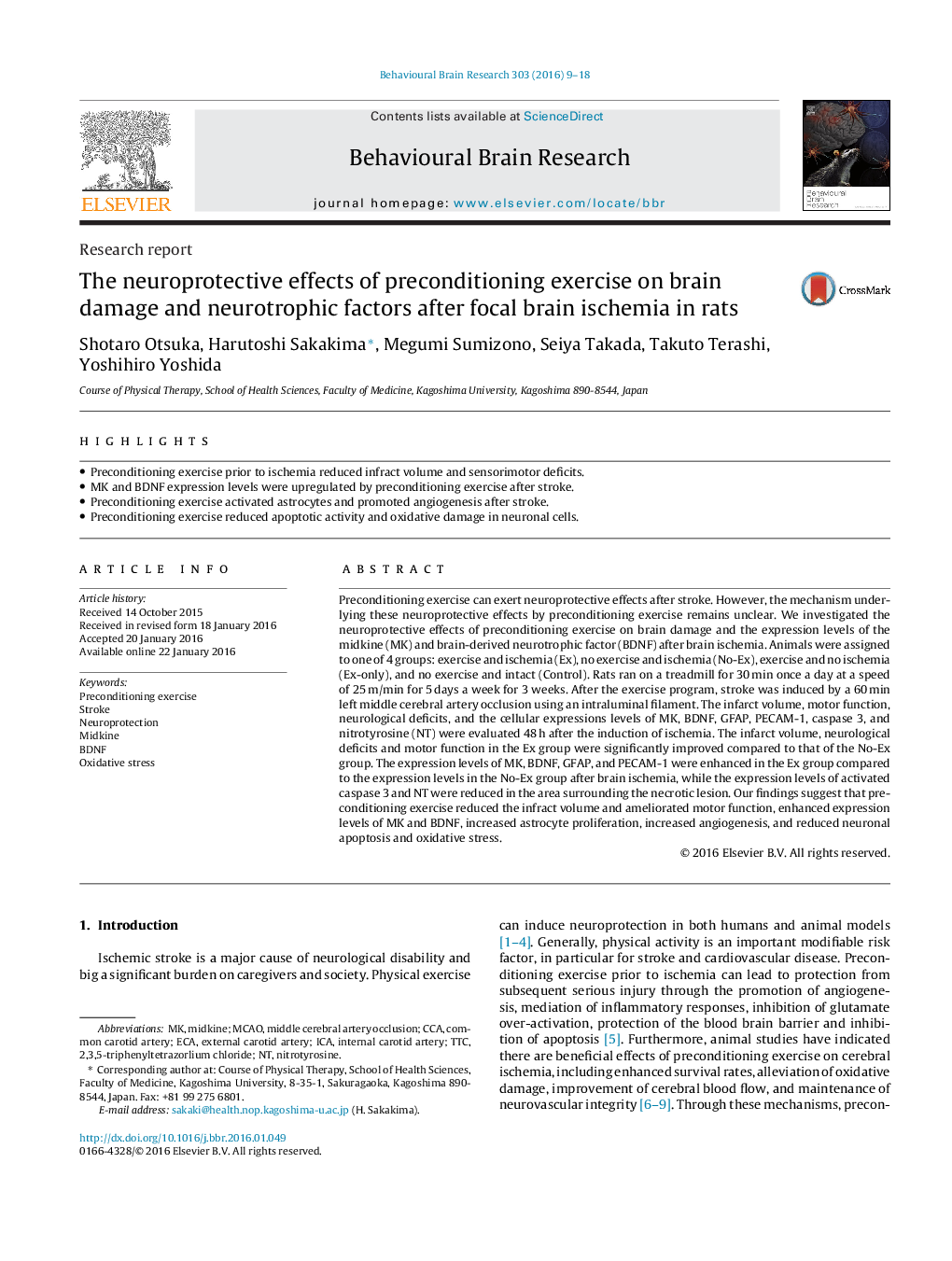| Article ID | Journal | Published Year | Pages | File Type |
|---|---|---|---|---|
| 4312220 | Behavioural Brain Research | 2016 | 10 Pages |
•Preconditioning exercise prior to ischemia reduced infract volume and sensorimotor deficits.•MK and BDNF expression levels were upregulated by preconditioning exercise after stroke.•Preconditioning exercise activated astrocytes and promoted angiogenesis after stroke.•Preconditioning exercise reduced apoptotic activity and oxidative damage in neuronal cells.
Preconditioning exercise can exert neuroprotective effects after stroke. However, the mechanism underlying these neuroprotective effects by preconditioning exercise remains unclear. We investigated the neuroprotective effects of preconditioning exercise on brain damage and the expression levels of the midkine (MK) and brain-derived neurotrophic factor (BDNF) after brain ischemia. Animals were assigned to one of 4 groups: exercise and ischemia (Ex), no exercise and ischemia (No-Ex), exercise and no ischemia (Ex-only), and no exercise and intact (Control). Rats ran on a treadmill for 30 min once a day at a speed of 25 m/min for 5 days a week for 3 weeks. After the exercise program, stroke was induced by a 60 min left middle cerebral artery occlusion using an intraluminal filament. The infarct volume, motor function, neurological deficits, and the cellular expressions levels of MK, BDNF, GFAP, PECAM-1, caspase 3, and nitrotyrosine (NT) were evaluated 48 h after the induction of ischemia. The infarct volume, neurological deficits and motor function in the Ex group were significantly improved compared to that of the No-Ex group. The expression levels of MK, BDNF, GFAP, and PECAM-1 were enhanced in the Ex group compared to the expression levels in the No-Ex group after brain ischemia, while the expression levels of activated caspase 3 and NT were reduced in the area surrounding the necrotic lesion. Our findings suggest that preconditioning exercise reduced the infract volume and ameliorated motor function, enhanced expression levels of MK and BDNF, increased astrocyte proliferation, increased angiogenesis, and reduced neuronal apoptosis and oxidative stress.
